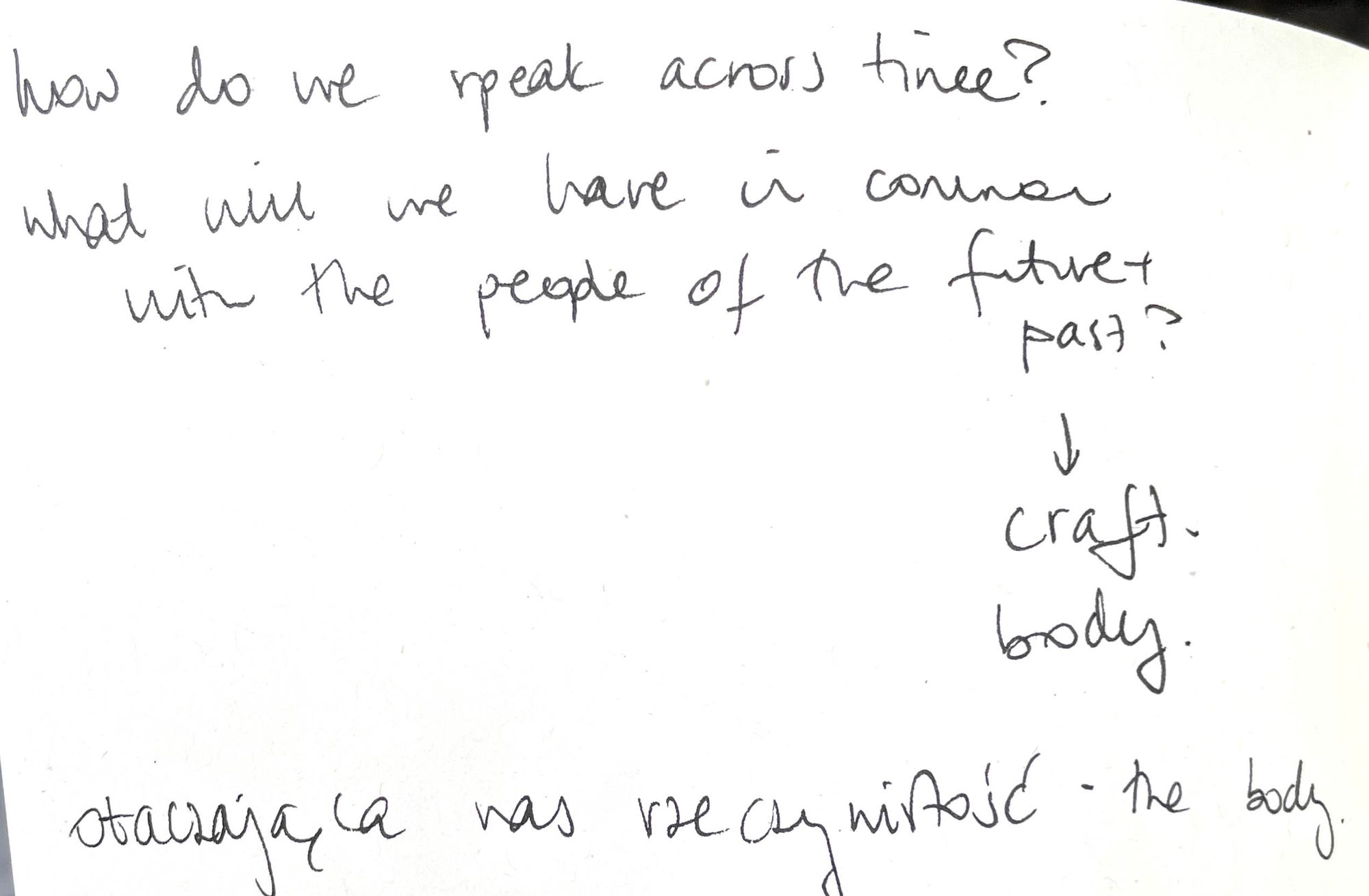If you’ve been following me for a while, you might have noticed that I haven’t been posting as much on social media and my newsletters are a little less frequent. The truth is, because of this particular season in life, I don’t have as much time to focus on these things as I would maybe want to. What I have really loved though, is not feeling a financial strain on my work, which in turn has freed me up to think more conceptually and more carefully about what I’m making.
I had a massive brainstorming session a few weekends back, and as I was writing my ideas down, I realised that I’ve had a very similar train of thought for a while. I kept being haunted by this familiar feeling, and I forced myself to go to the loft and open up old boxes labelled “Old Sketchbooks”.


I was right. As I opened up my random sketchbooks, I realised that some of my brainstorms from last week looked almost identical to the ones from 2017.
7 years. That’s a long time to be chewing over an idea.


FUTURECRAFT
For a while, I’ve absolutely loved the work of Katie Paterson, the Scottish conceptual artist whose work centres around the passage of time and our place in it.
I first came into contact with her work when I was away in Edinburgh a few years back with one of my previous jobs. We had a gallery day (yes, my job was really awesome, that was a working day for me!) and we went to see her solo show in 2019 at Edinburgh’s Modern One. I was awestruck by her seminal work The Future Library. The idea of deliberately making a piece of work that is meant to last for more than 100 years and to continue being relevant after the artists’ death was so profound to me. I sat and watched her film in awe and felt a deep sense of peace and wonder.
In one of her talks, Paterson asks the question: “What is my quest?”
This idea of seeing art as a quest is deeply challenging to me. One of the reasons why making is important, is its silent power of speaking across cultures and time. This is why I keep going back to craft and backstrap weaving and can’t seem to shake it off.


At my backstrap weaving workshops, once the attendees finally sit at the loom after a long time of set up and start weaving, something special happens. Quite a few people have told me how in those movements they feel connected to makers of the past.
In a way, craft has always been. It will always continue. It will connect us to both our ancestors and our descendants, because as people we always have to make in order to make sense of the world around us and even ourselves.
A question that I keep coming back to is: how can I make woven objects that speak across time? I want to explore that tension of using an ancient way of weaving to create work that feels both old and futuristic at the same time.
Lucy McRae, one of my absolute favourite artists said in one of her recent interviews: “We all have a human condition of wanting to know purpose and what we are here for.”
I couldn’t agree more. There could be many answers to that. But I think making art is part of figuring these things out.
As always, thanks for reading! I’ll be back with a part two to this newsletter and an update on what I’m making.
Have an amazing rest of your weekend!
Alex
